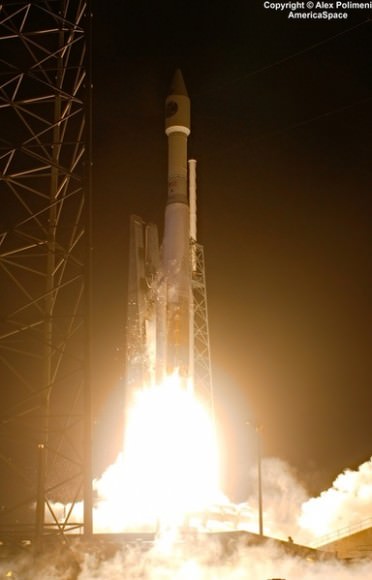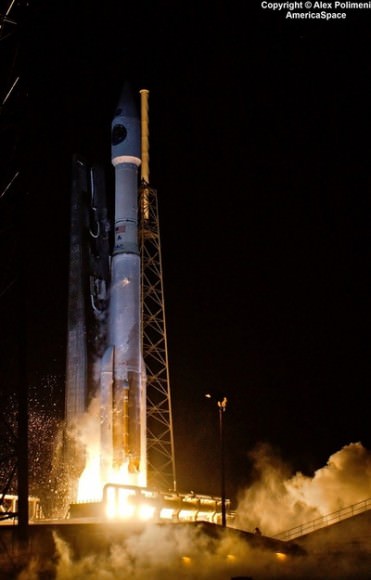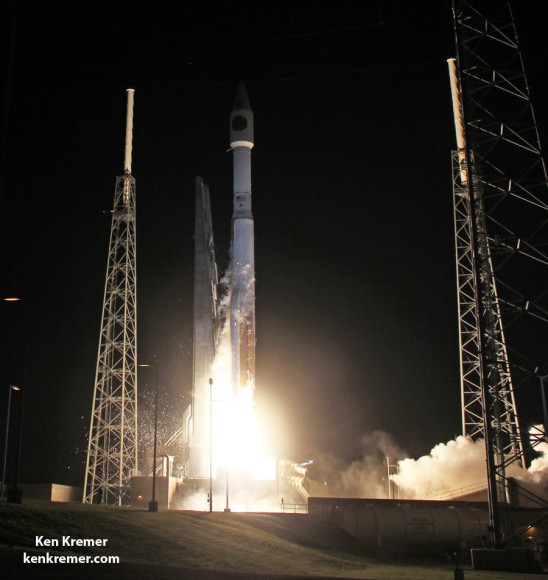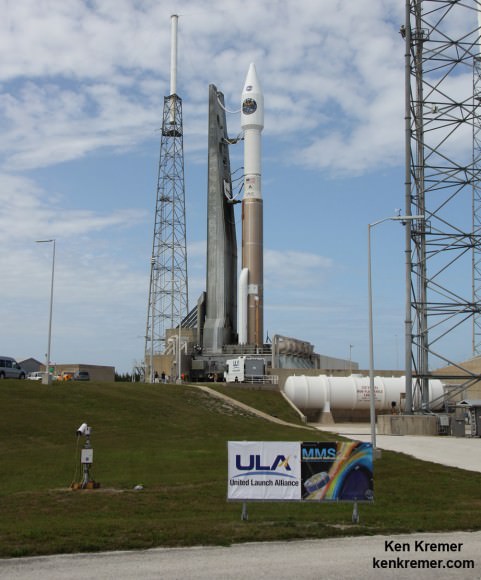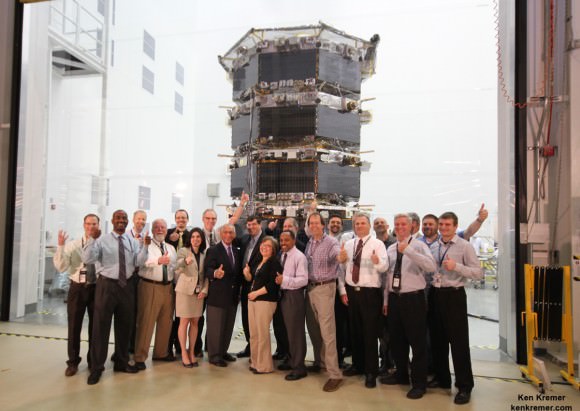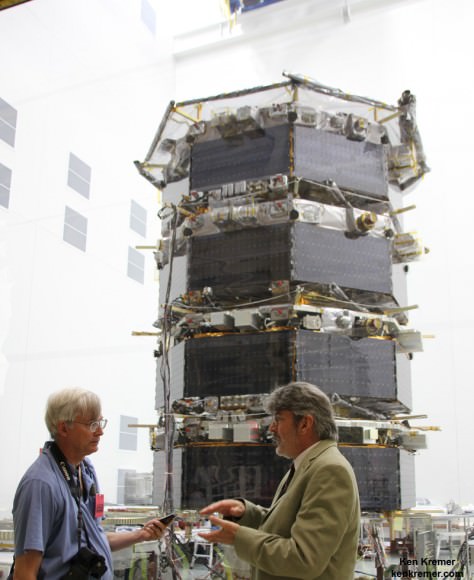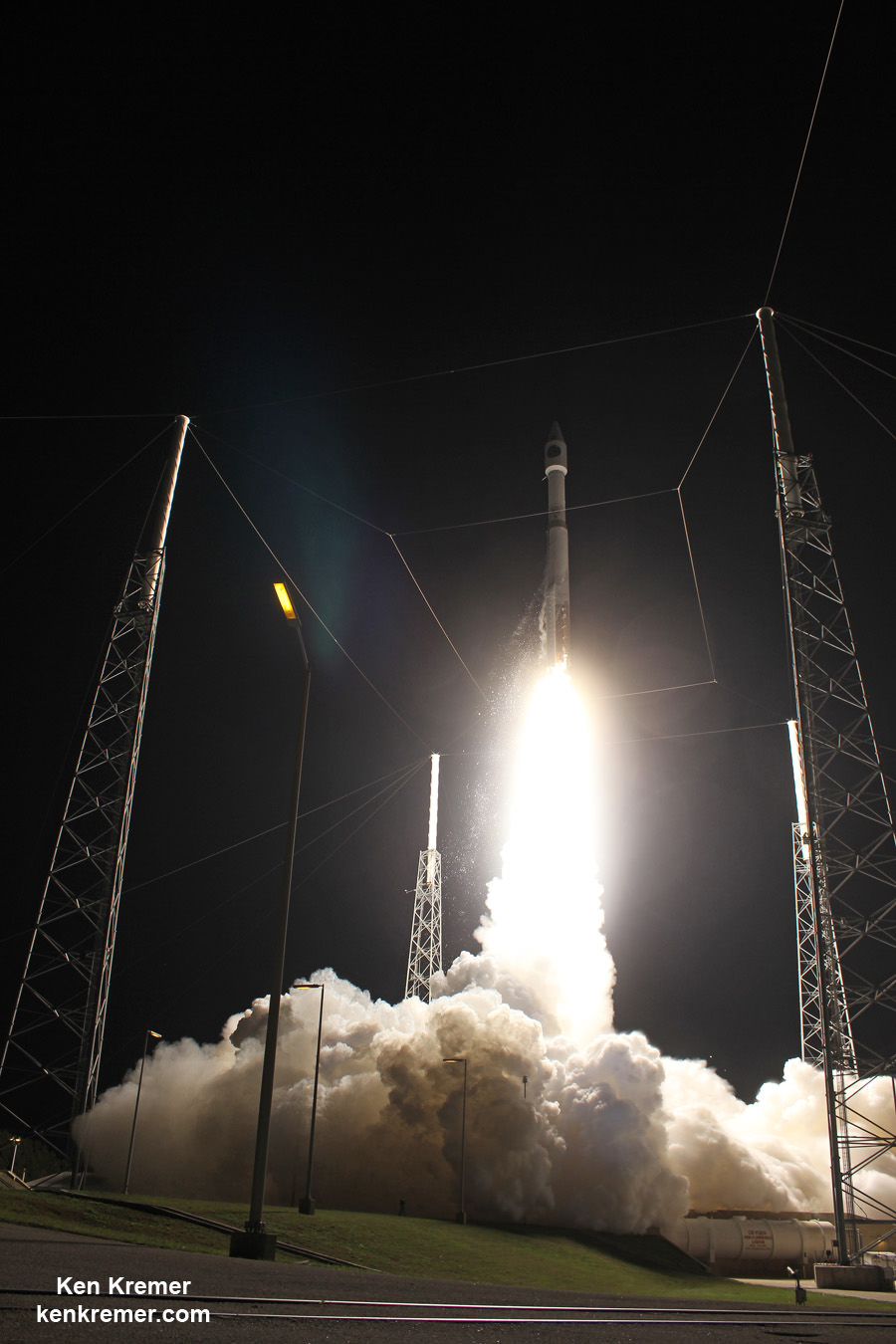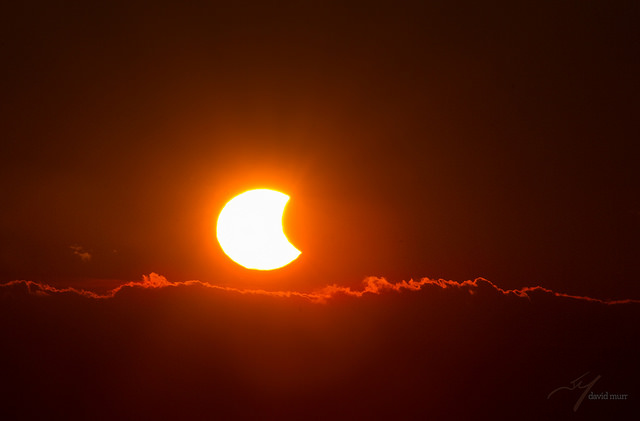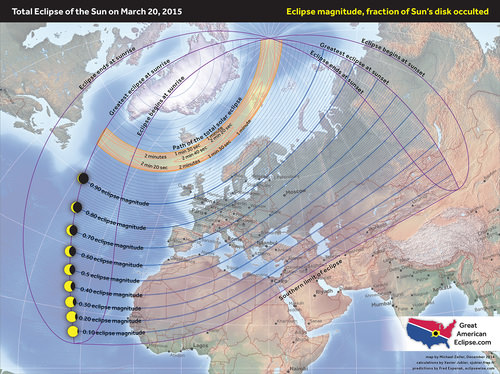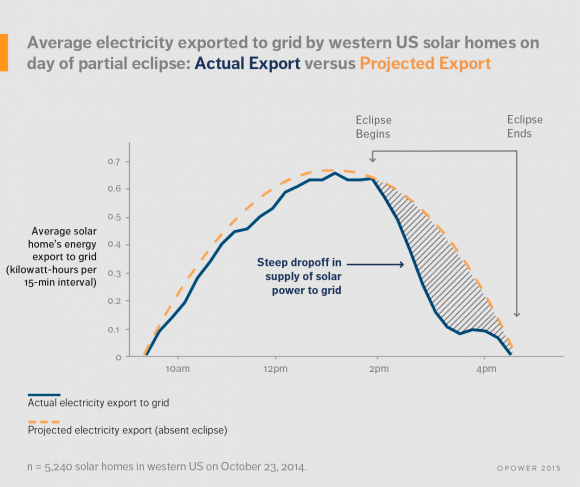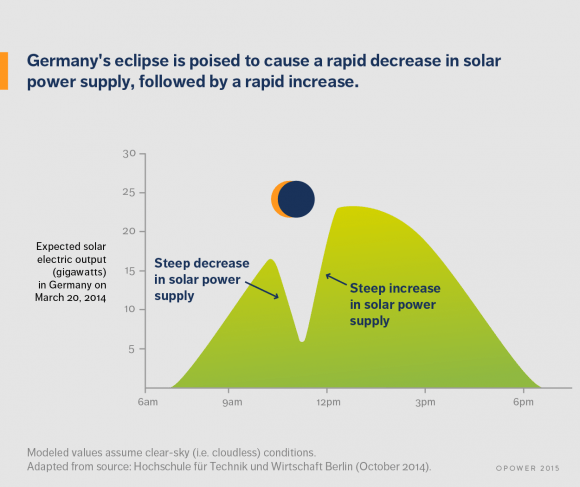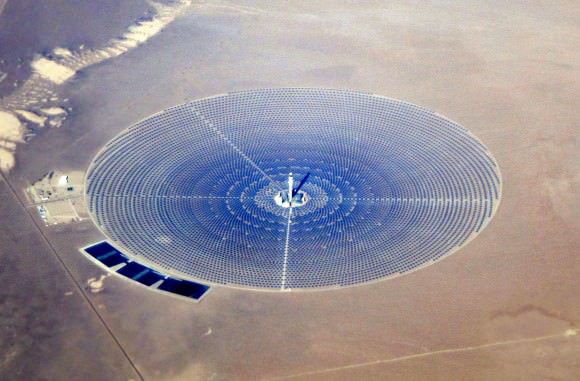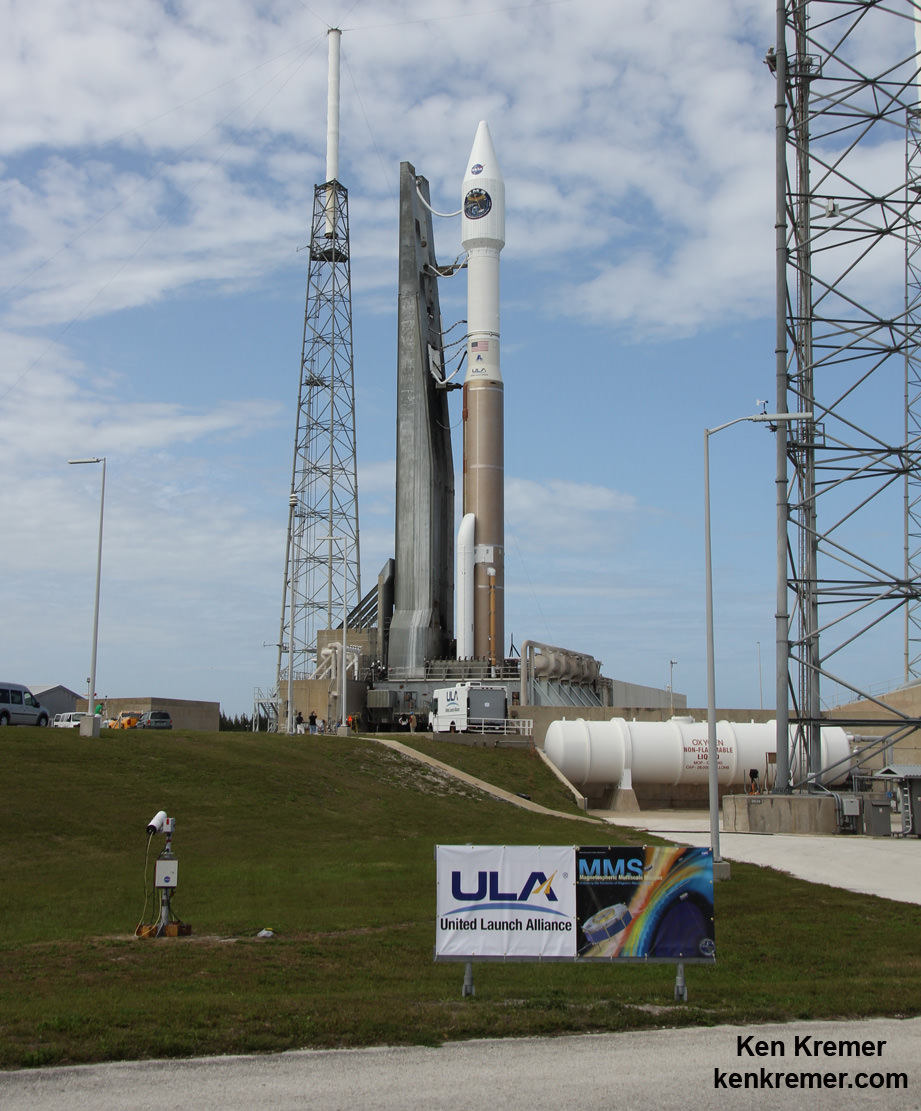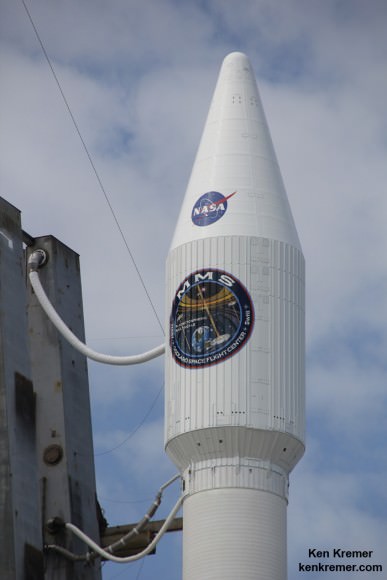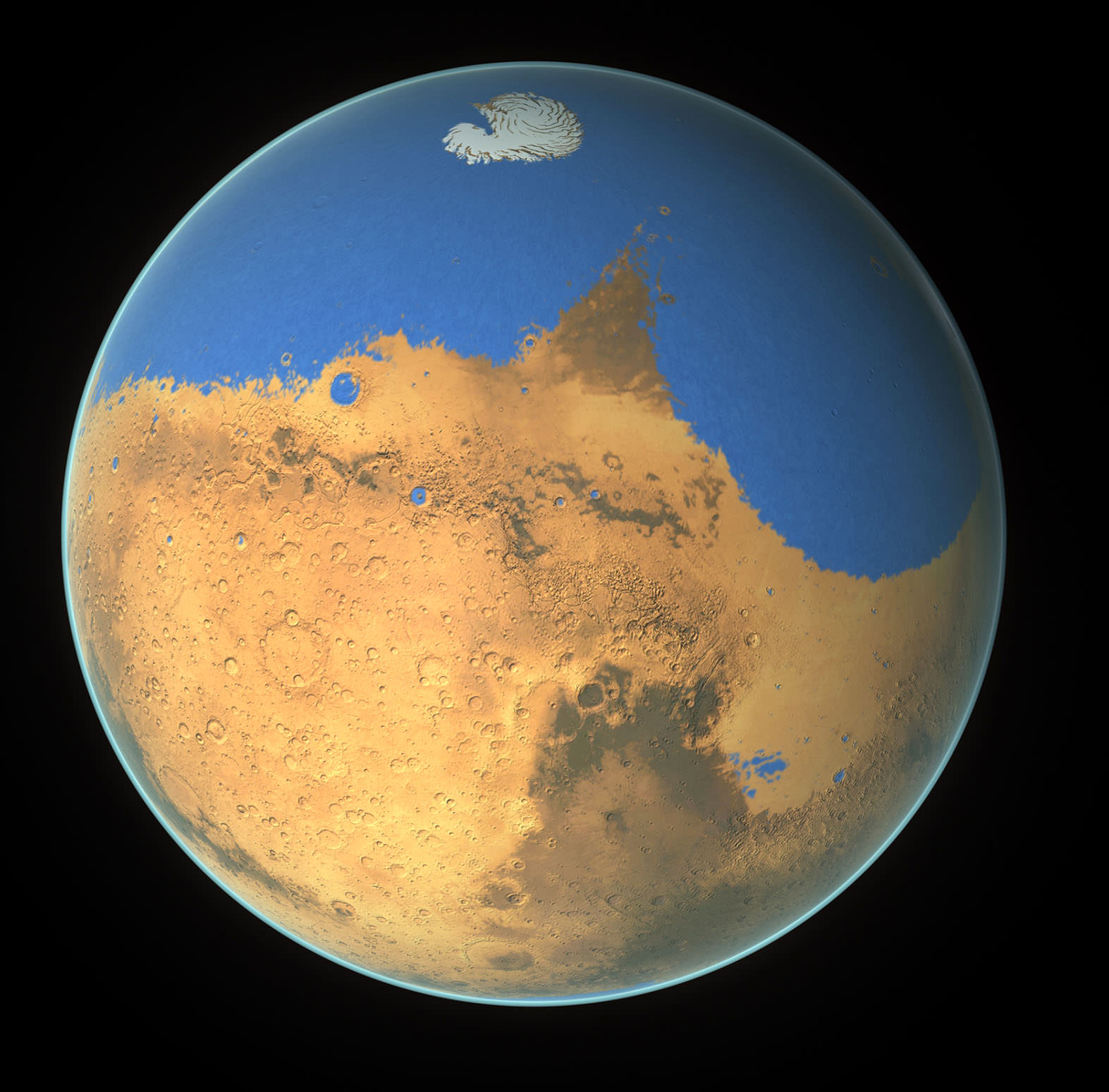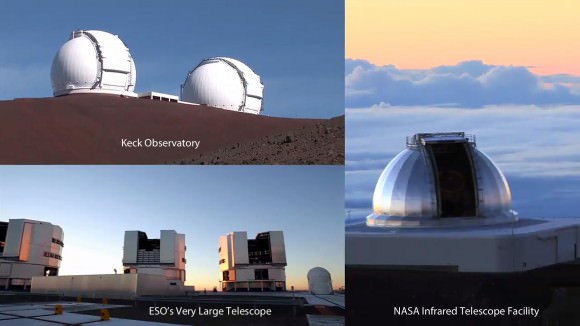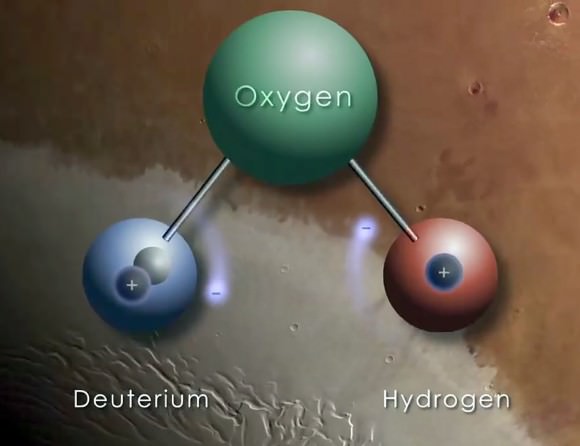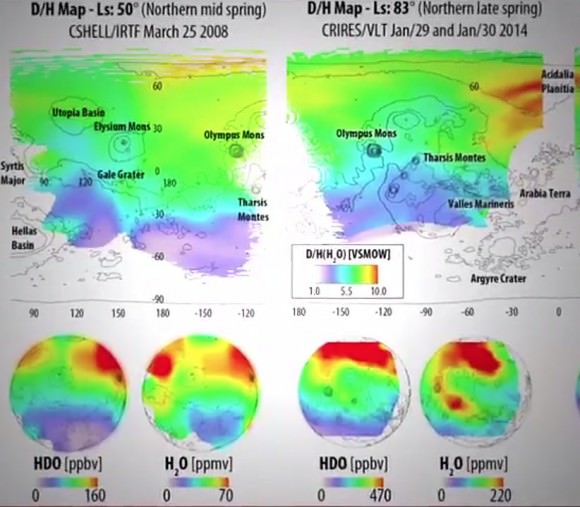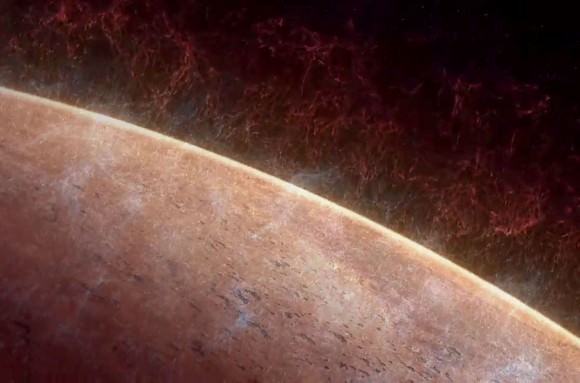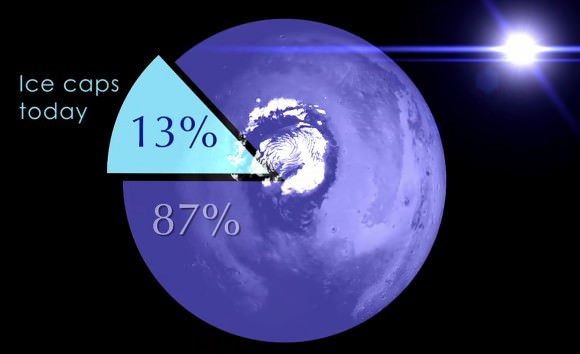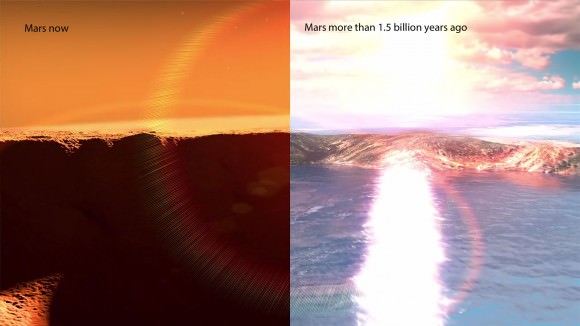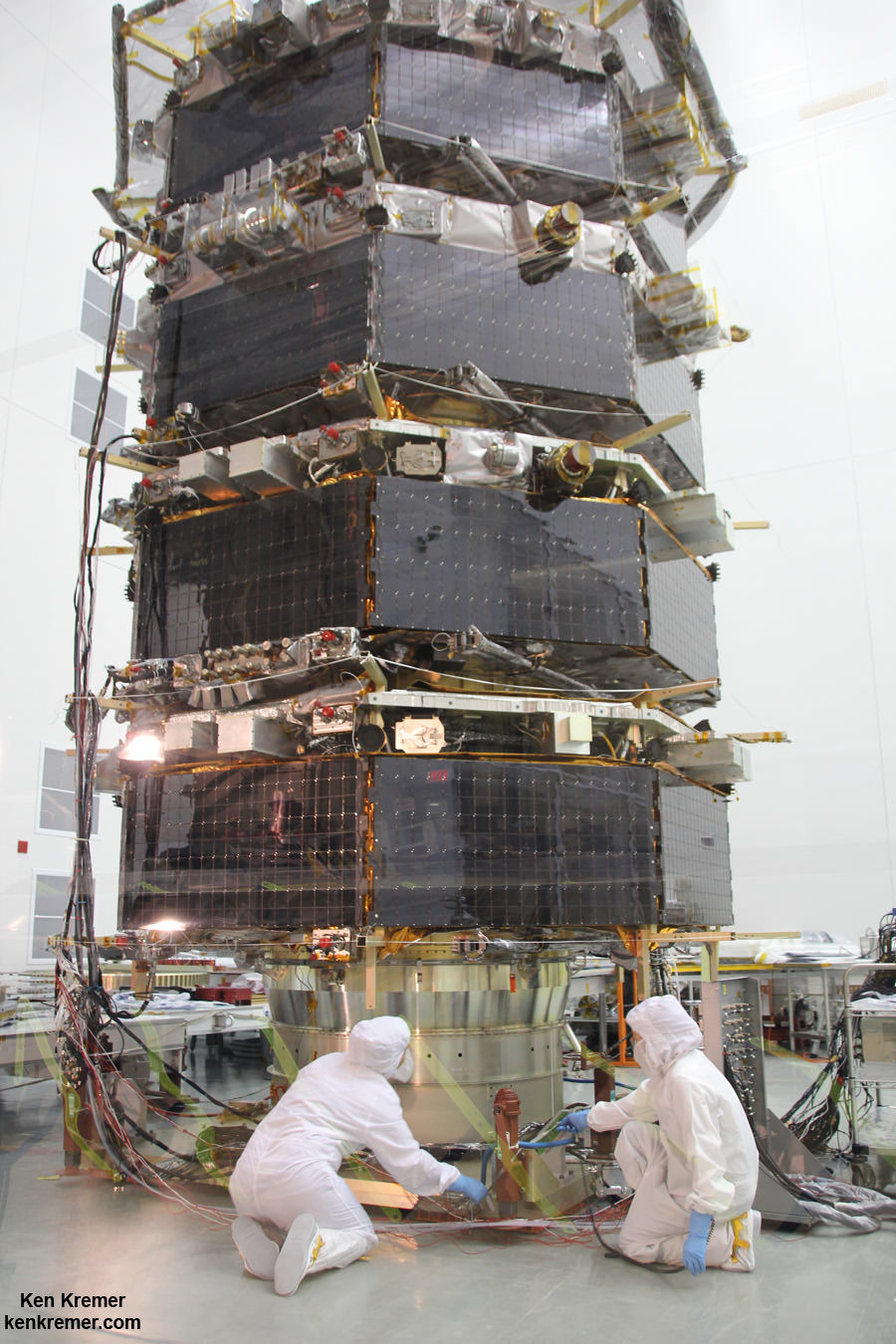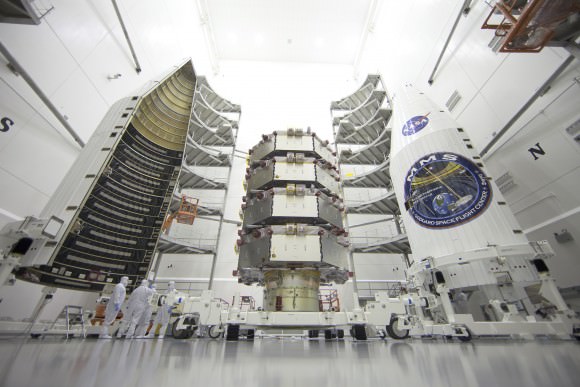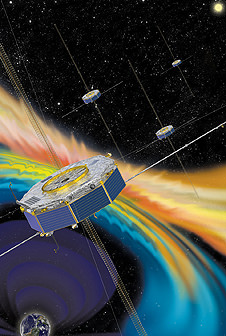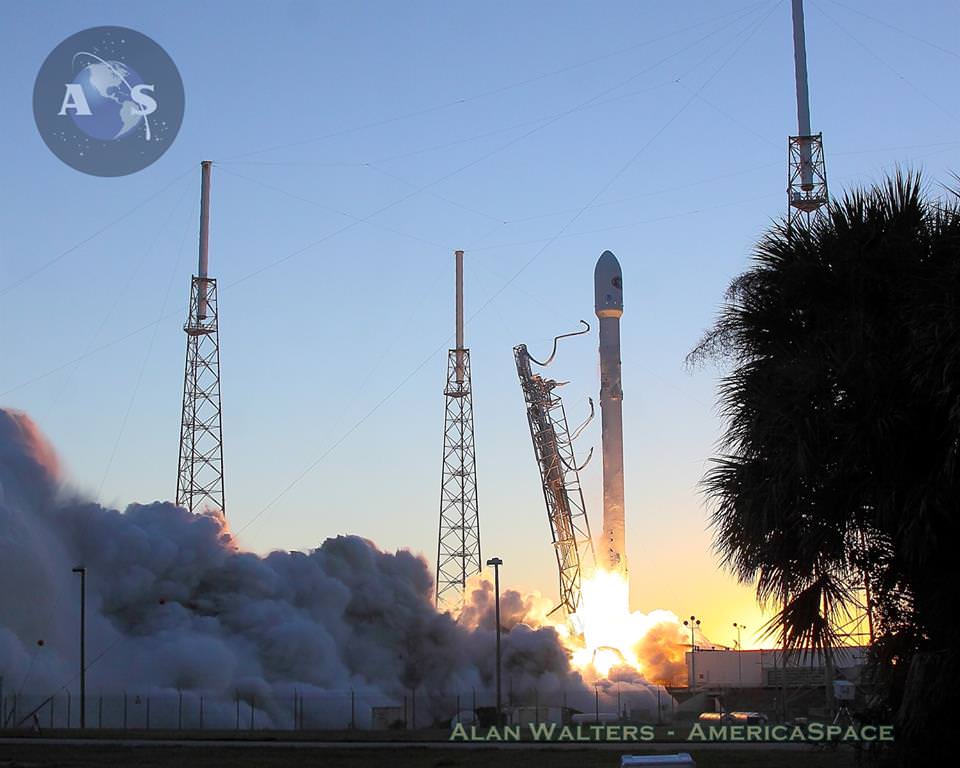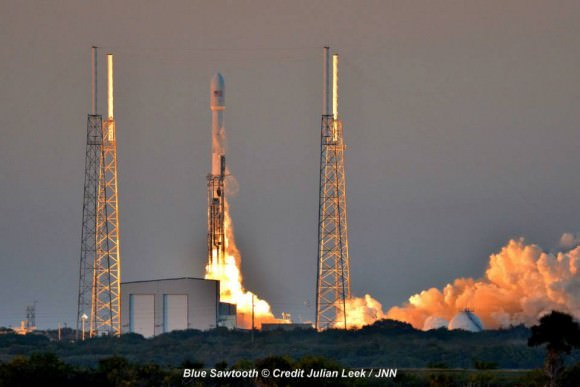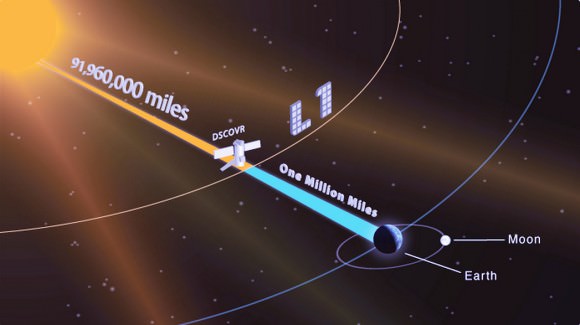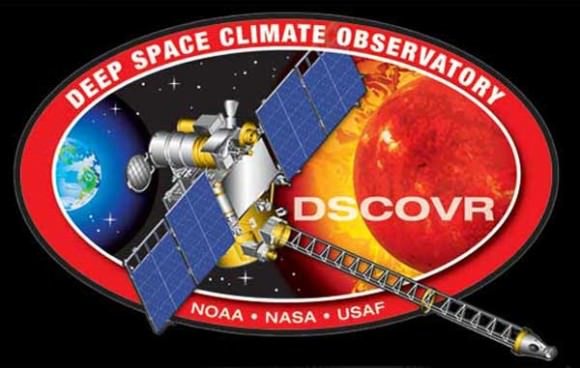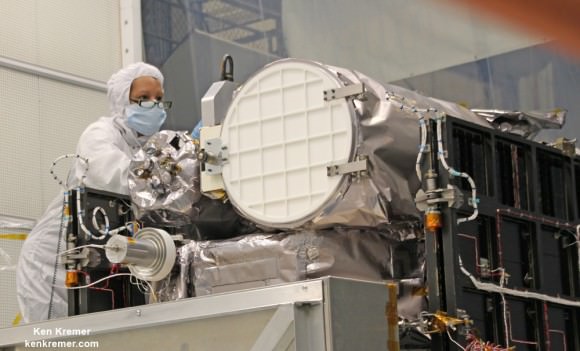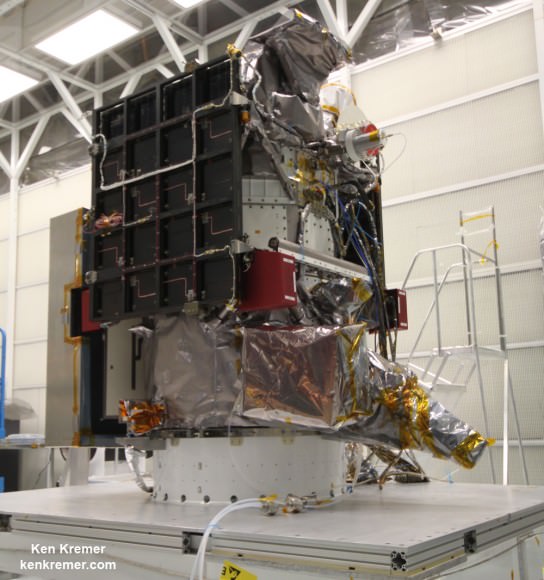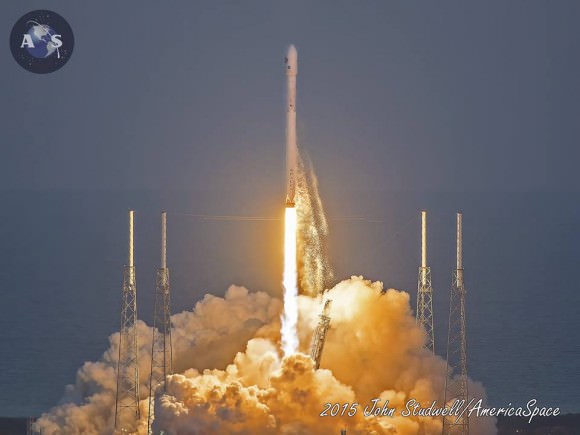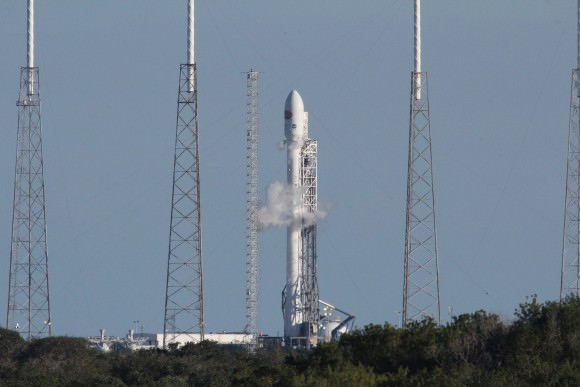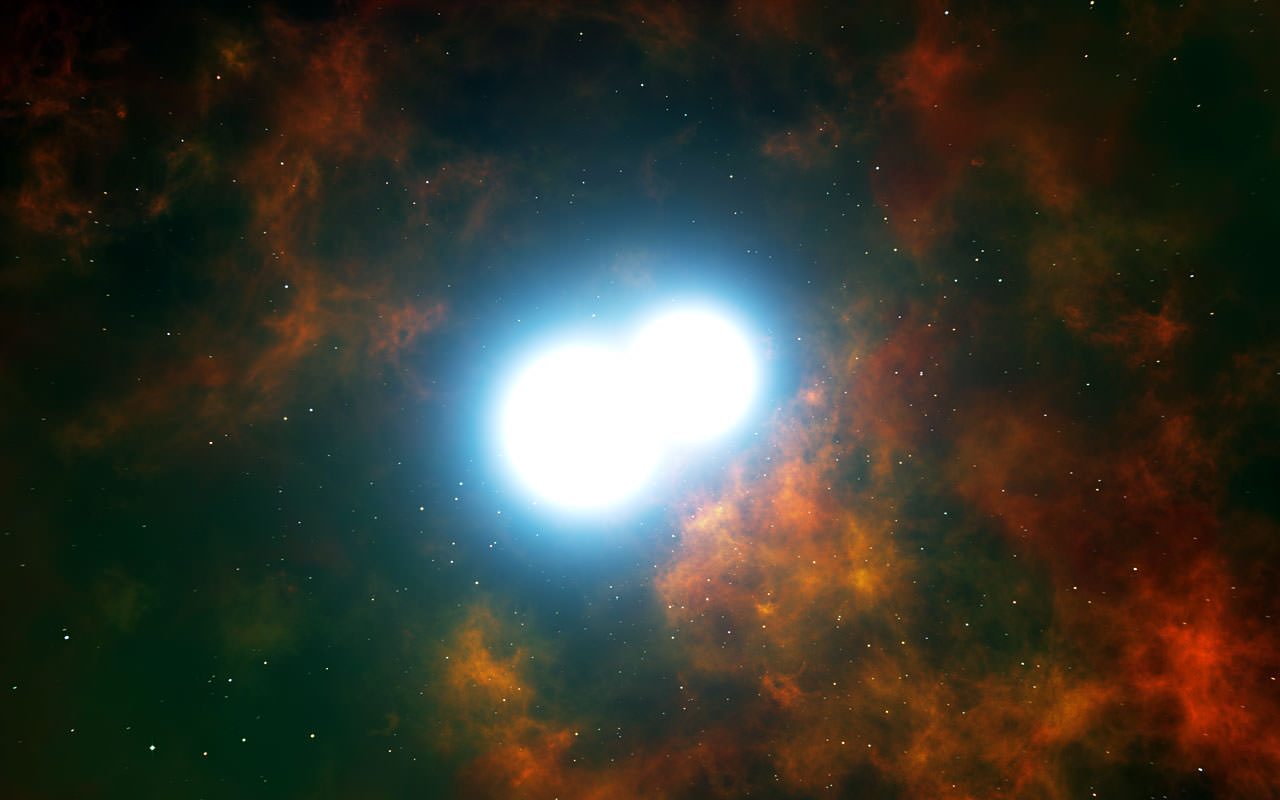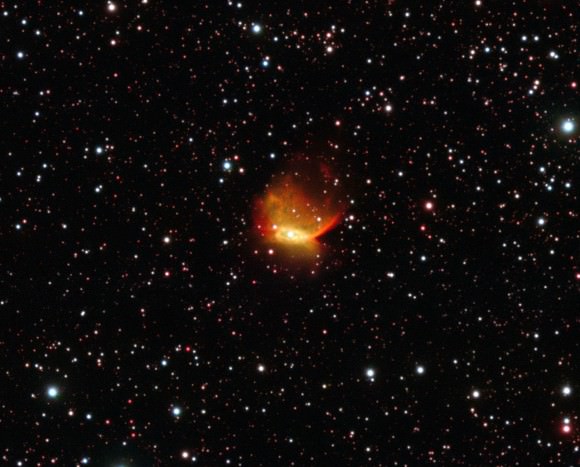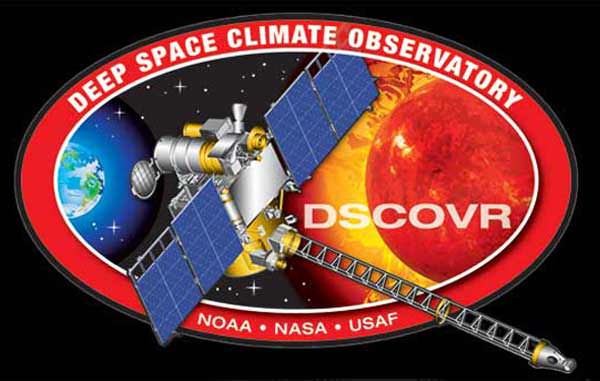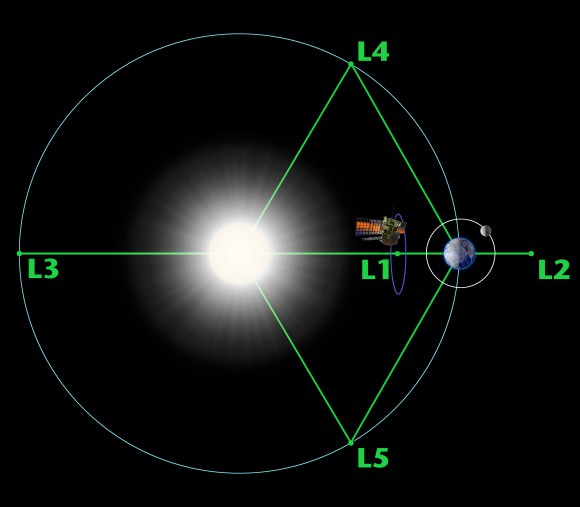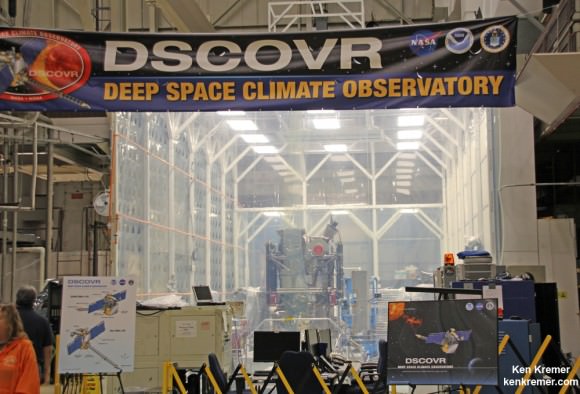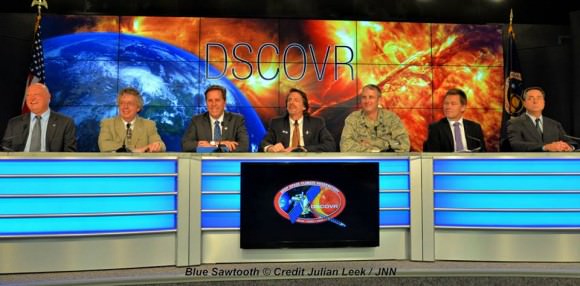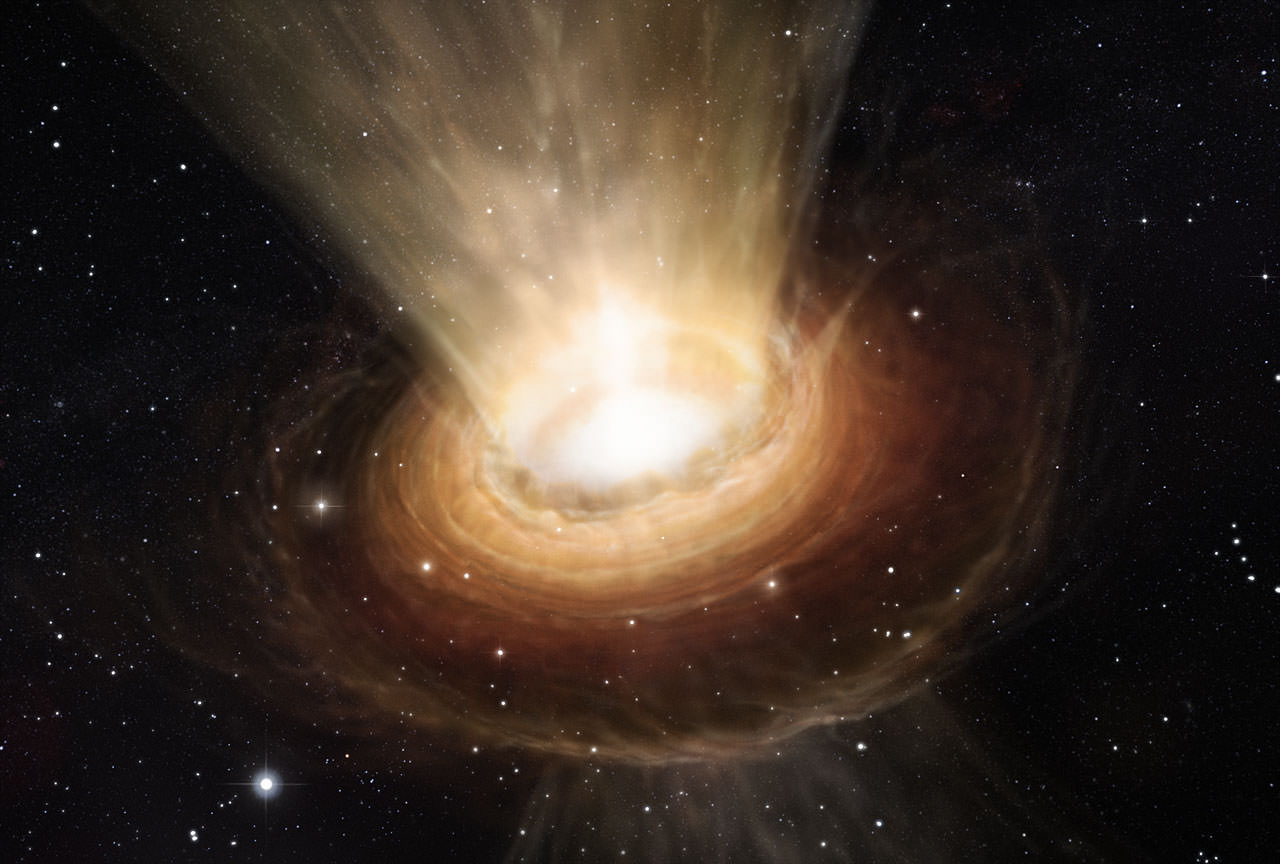KENNEDY SPACE CENTER, FL – NASA’s constellation of state-of-the-art magnetospheric science satellites successfully rocketed to orbit late Thursday night, March 12, during a spectacular nighttime launch on a mission to unravel the mysteries of the process known as magnetic reconnection.
The $1.1 Billion Magnetospheric Multiscale (MMS) mission is comprised of four formation flying satellites blasted to Earth orbit atop a United Launch Alliance Atlas V rocket from Cape Canaveral Air Force Station, Florida, precisely on time at 10:44 p.m. EDT.
Magnetic reconnection is a little understood natural process whereby magnetic fields around Earth connect and disconnect while explosively releasing vast amounts of energy. It occurs throughout the universe.
NASA’s fleet of four MMS spacecraft will soon start the first mission devoted to studying the phenomenon called magnetic reconnection. Scientists believe that it is the catalyst for some of the most powerful explosions in our solar system.
The night launch of the venerable Atlas V booster turned night into day as the 195 foot tall rocket roared to life on the fiery fury of about a million and a half pounds of thrust, thrilling spectators all around the Florida space coast and far beyond.
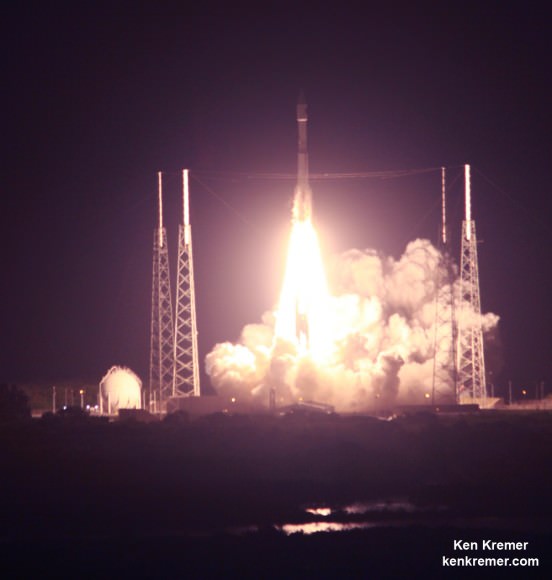
NASA’s four Magnetospheric Multiscale (MMS) spacecraft were stacked like pancakes on top of one another and encapsulated inside the rocket extended nose cone atop the Atlas V.
The venerable rocket continues to enjoy a 100% success rate. It launched in the Atlas V 421 configuration with a 4-meter diameter Extra Extended Payload Fairing along with two Aerojet Rocketdyne solid rocket motors attached to the Atlas booster first stage.
The two stage Atlas V delivered the MMS satellites to a highly elliptical orbit. They were then deployed from the rocket’s Centaur upper stage sequentially, in five-minute intervals beginning at 12:16 a.m. Friday, March 13. The last separation occurred at 12:31 a.m.
About 10 minutes later at 12:40 a.m., NASA scientists and engineers confirmed the health of all four spacecraft.
“I am speaking for the entire MMS team when I say we’re thrilled to see all four of our spacecraft have deployed and data indicates we have a healthy fleet,” said Craig Tooley, project manager at NASA’s Goddard Space Flight Center in Greenbelt, Maryland.
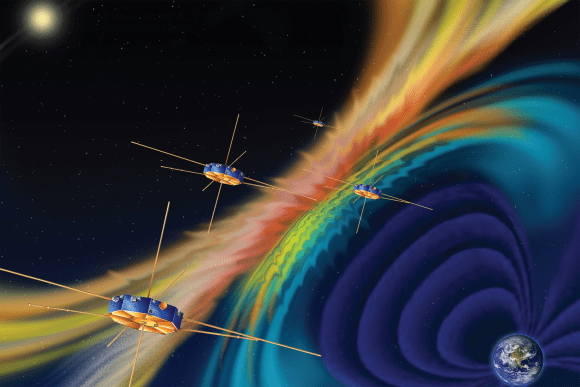
This marked ULA’s 3rd launch in 2015, the 53nd Atlas V mission and the fourth Atlas V 421 launch in the programs life.
Each of the identically instrumented spacecraft are about four feet tall and eleven feet wide.
The deployment and activation of all four spacecraft is absolutely essential to the success of the mission, said Jim Burch, principal investigator of the MMS instrument suite science team at Southwest Research Institute (SwRI) in San Antonio, Texas.
They will fly in a pyramid formation to conduct their science mission, spaced about 10 miles apart. That separation distance will vary over time during the two year primary mission.
NASA scientists and engineers will begin deploying multiple booms and antennas on the spacecraft in a few days, MMS mission scientist Glyn Collinson of NASA Goddard told Universe Today.
The deployment and calibration process will last about six months, Collinson explained. Science observations are expected to begin in September 2015.
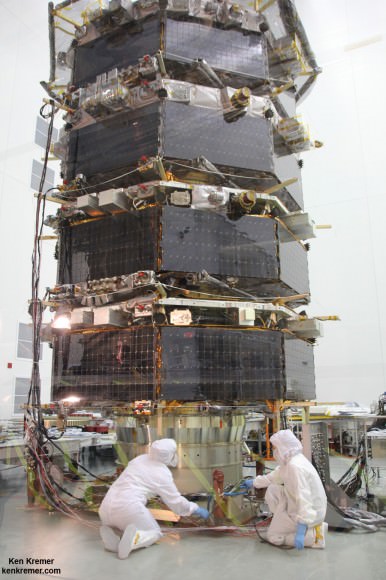
“After a decade of planning and engineering, the science team is ready to go to work,” said Burch.
“We’ve never had this type of opportunity to study this fundamental process in such detail.”
The spacecraft will fly in a tight formation through regions of reconnection activity.
The instruments will conduct their science observations at rates100 times faster than any previous mission.
“MMS is a crucial next step in advancing the science of magnetic reconnection – and no mission has ever observed this fundamental process with such detail,” said Jeff Newmark, interim director for NASA’s Heliophysics Division at the agency’s Headquarters in Washington.
“The depth and detail of our knowledge is going to grow by leaps and bounds, in ways that no one can yet predict.”
MMS measurements should lead to significant improvements in models for yielding better predictions of space weather and thereby the resulting impacts for life here on Earth as well as for humans aboard the ISS and robotic satellite explorers in orbit and the heavens beyond.
The best place to study magnetic reconnection is ‘in situ’ in Earth’s magnetosphere. This will lead to better predictions of space weather phenomena.
Magnetic reconnection is also believed to help trigger the spectacular aurora known as the Northern or Southern lights.
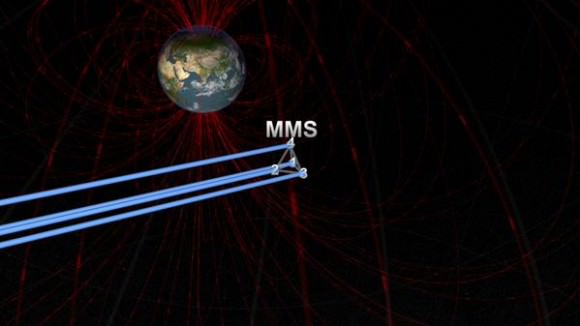
MMS is a Solar Terrestrial Probes Program, or STP, mission within NASA’s Heliophysics Division. The probes were built, integrated and tested at NASA Goddard which is responsible for overall mission management and operations.
Watch for Ken’s ongoing MMS coverage. He was onsite at the Kennedy Space Center in the days leading up to the launch and for the liftoff on March 12.
Stay tuned here for Ken’s continuing MMS, Earth and planetary science and human spaceflight news.
………….
Learn more about MMS, Mars rovers, Orion, SpaceX, Antares, NASA missions and more at Ken’s upcoming outreach events:
Mar 13: “MMS, Orion, SpaceX, Antares, Curiosity Explores Mars,” Kennedy Space Center Quality Inn, Titusville, FL, evenings
